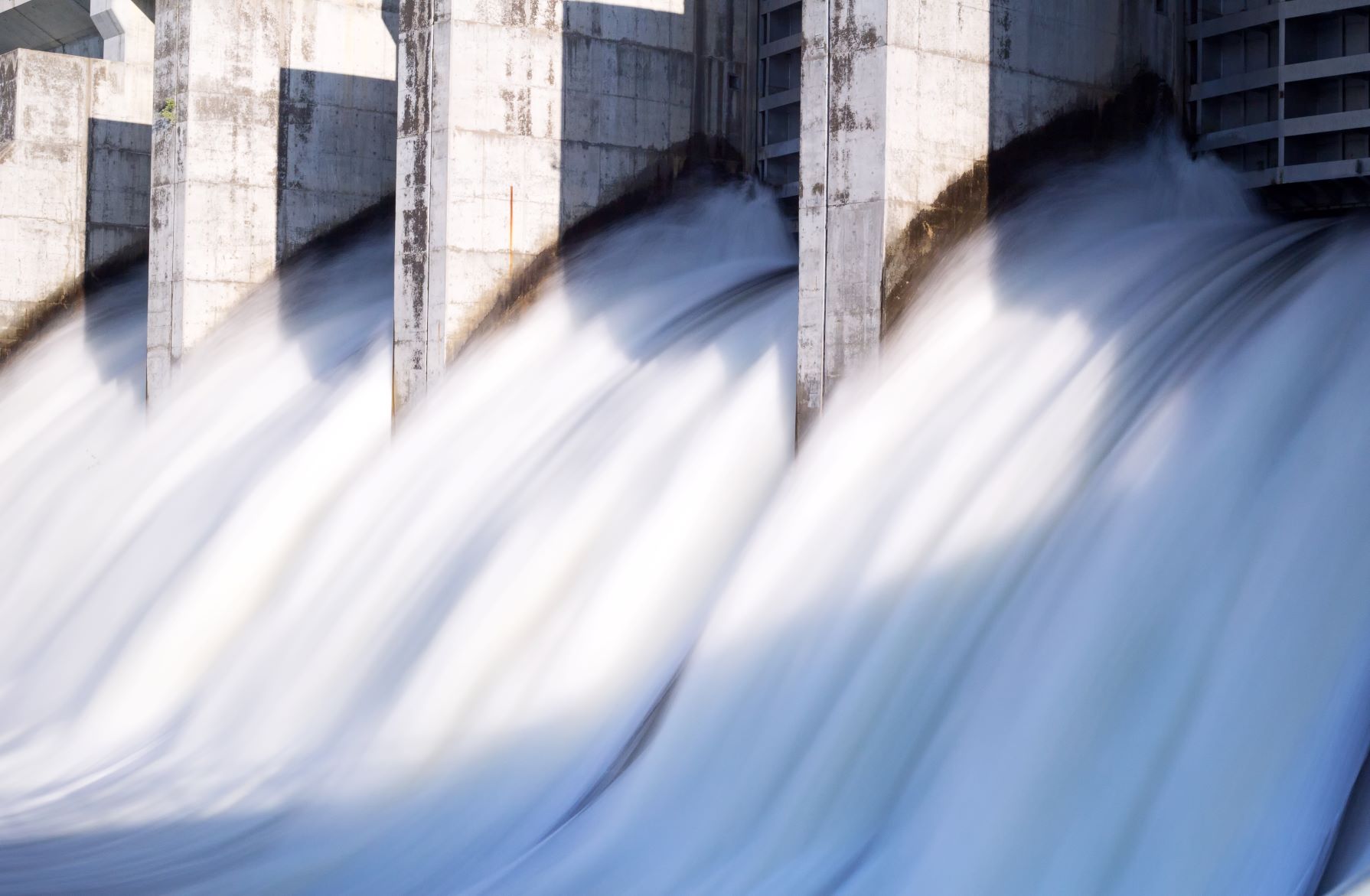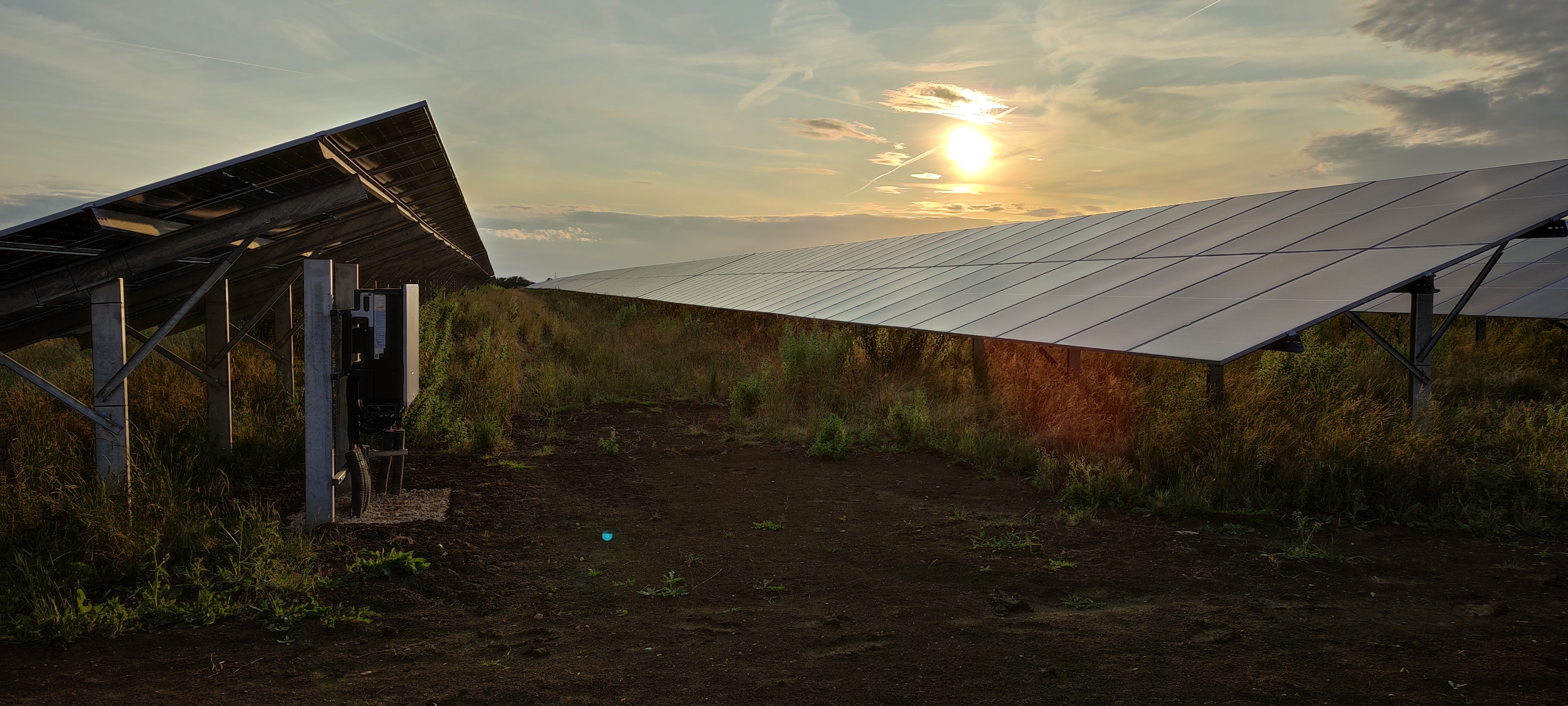Future-proof: Diversification unlocks the power of sustainable renewable energy returns

Energy transition and the race to net zero have put renewable energy at the forefront of future energy strategies. Meanwhile, geopolitical flashpoints and global conflict are redrawing energy supply lines - underlining the urgency to accelerate the adoption of renewables.
The International Energy Agency (IEA) forecasts that renewables could supply 90% of the world’s electricity by 2050. But rather than depending on predominately top-down government initiatives, IEA analysis shows that a large proportion of the funding for the energy transition will have to come from the private sector and institutional investment.
The restructuring of electricity markets around the globe has created a fertile environment in which both private and institutional investors can participate and invest. And as the investment communities’ understanding of renewables has evolved, so has our emphasis on diversification of renewable energy sources.
Stability in an unstable world
We recently conducted a research study with 100 UK institutional investors and wealth managers, collectively responsible for around £118 billion in assets under management.
Ninety-four per cent of respondents said the renewable energy sector would become more attractive for investments in the next three years. Many of those investors see the benefits of diversification in renewables – 67% highlighted diversification as a reason for an increase in allocation.
To sustainably power our world, we must combine and blend renewable sources to create well-diversified energy solutions - from wind to solar to hydroelectric power and battery storage.
We believe diversification brings two main benefits. Firstly, it broadens the pipeline of opportunities for investments, which ensures a portfolio can grow into the future. Secondly, it is expected that diversification will increase the stability of returns to investors.
From a risk perspective, constructing a diversified portfolio that balances a mix of energy sources can cope better with external shocks and adverse events.
Tom Williams, Downing’s Head of Energy & Infrastructure, commented: “It is clear that more renewable energy generation is necessary. More commitments and further investments are very welcome, but the nature of the investment and the right recipe for a sustainable energy mix need to be clearly thought through.
“For us at Downing, it is essential that for an efficient, reliable, cost-effective and sustainable energy system, diversification is taken into account. The way forward has to be combining different technologies in different geographies with increased interconnection between those geographies.”
Depth of diversification
The only constant of weather is that it is variable. Technologies such as wind, solar, and hydropower are seasonal and intermittent. By combining investments in multiple asset classes and geographies, you reduce the reliance on any single technology, any given natural resource and particular weather patterns.
For example, Sweden is divided into four different power price zones. Each zone has its own fundamentals of supply and demand of electricity and, while there are transmission cables between the four zones, each zone has its own power price. Consequently, energy sold within a distinct zone predominately originates from that zone. Investing in all four zones provides diversification and further exposure to different weather patterns.
Within the Downing Renewables & Infrastructure Trust portfolio (DORE), we have 19 hydropower plants spread across multiple rivers and three different price zones in Sweden, allowing us to capture price variability between these price zones.
As a result, DORE has created a platform for expansion in the Swedish hydropower space, allowing it to acquire single hydropower plants across Sweden.
Tom Williams commented: “Our investments in Sweden are all in existing operational hydropower plants that have been in situ for decades. When they regulate water flow, they do so from smaller structures on existing natural bodies of water, such as lakes, that have been there for even longer than the power plants.”
Diversifying by geography, including power price zones, provides a significant pipeline for renewable energy investment opportunities that benefit from the variation of energy pricing and the spectrum of regulatory policy regimes.
In the UK, hydropower is often overlooked as a source of renewable energy. But hydro forms a key part of the energy transition in Northern Europe due to its ability to hold energy back in hydro reservoirs and generate electricity when other renewable energy sources are at low production. This helps reduce price volatility and maximises the value of the energy stored in reservoirs for both end users and investors. Some of the electricity used in the UK is sourced from Scandinavian hydro reservoirs through the utilisation of the North Sea Link, an interconnector cable from Norway to the UK.
How to achieve revenue diversification
Revenue diversification can be achieved through subsidies, power purchase agreements (PPAs), other forms of fixed revenues and exposure to the merchant price.
In the UK, PPAs allow long-term contracts under which a business agrees to purchase from a renewable energy generator. They provide stability to investors and project developers, which eases the path to constructing new renewable facilities.
Investors in the UK can benefit from high degrees of fixed revenues via renewable energy funds. Combined with hedging strategies, this significantly reduces risk exposure to the merchant power price and provides relatively stable revenue returns.
The project timelines of a renewable energy asset also offer different return profiles. Operational projects provide immediate yields, while construction and development-stage projects provide additional risk-adjusted returns.
Committed to the future
Macroeconomic tailwinds and the green energy transition are attracting more institutional investors to renewable energy exposure. While the asset class offers extraordinary opportunities, to give the best chance of stable and sustainable returns, investors need to consider the level of sophistication required by the portfolio manager to create a truly diversified portfolio of investments with a well-managed balance of risk and return.
At Downing, we have a truly holistic ambition: to create an investment approach that supports the transition to a net zero, cleaner, greener future. At the very foundation of this commitment lies the pillars of diversification.
Please note: Capital at risk. Returns not guaranteed. Changes in exchange rates may have an adverse effect on the value, price or income of investments. Opinions expressed represent the views of the fund manager at the time of publication, are subject to change, and should not be interpreted as investment advice.
Energy transition and the race to net zero have put renewable energy at the forefront of future energy strategies. Meanwhile, geopolitical flashpoints and global conflict are redrawing energy supply lines - underlining the urgency to accelerate the adoption of renewables.
The International Energy Agency (IEA) forecasts that renewables could supply 90% of the world’s electricity by 2050. But rather than depending on predominately top-down government initiatives, IEA analysis shows that a large proportion of the funding for the energy transition will have to come from the private sector and institutional investment.
The restructuring of electricity markets around the globe has created a fertile environment in which both private and institutional investors can participate and invest. And as the investment communities’ understanding of renewables has evolved, so has our emphasis on diversification of renewable energy sources.
Stability in an unstable world
We recently conducted a research study with 100 UK institutional investors and wealth managers, collectively responsible for around £118 billion in assets under management.
Ninety-four per cent of respondents said the renewable energy sector would become more attractive for investments in the next three years. Many of those investors see the benefits of diversification in renewables – 67% highlighted diversification as a reason for an increase in allocation.
To sustainably power our world, we must combine and blend renewable sources to create well-diversified energy solutions - from wind to solar to hydroelectric power and battery storage.
We believe diversification brings two main benefits. Firstly, it broadens the pipeline of opportunities for investments, which ensures a portfolio can grow into the future. Secondly, it is expected that diversification will increase the stability of returns to investors.
From a risk perspective, constructing a diversified portfolio that balances a mix of energy sources can cope better with external shocks and adverse events.
Tom Williams, Downing’s Head of Energy & Infrastructure, commented: “It is clear that more renewable energy generation is necessary. More commitments and further investments are very welcome, but the nature of the investment and the right recipe for a sustainable energy mix need to be clearly thought through.
“For us at Downing, it is essential that for an efficient, reliable, cost-effective and sustainable energy system, diversification is taken into account. The way forward has to be combining different technologies in different geographies with increased interconnection between those geographies.”
Depth of diversification
The only constant of weather is that it is variable. Technologies such as wind, solar, and hydropower are seasonal and intermittent. By combining investments in multiple asset classes and geographies, you reduce the reliance on any single technology, any given natural resource and particular weather patterns.
For example, Sweden is divided into four different power price zones. Each zone has its own fundamentals of supply and demand of electricity and, while there are transmission cables between the four zones, each zone has its own power price. Consequently, energy sold within a distinct zone predominately originates from that zone. Investing in all four zones provides diversification and further exposure to different weather patterns.
Within the Downing Renewables & Infrastructure Trust portfolio (DORE), we have 19 hydropower plants spread across multiple rivers and three different price zones in Sweden, allowing us to capture price variability between these price zones.
As a result, DORE has created a platform for expansion in the Swedish hydropower space, allowing it to acquire single hydropower plants across Sweden.
Tom Williams commented: “Our investments in Sweden are all in existing operational hydropower plants that have been in situ for decades. When they regulate water flow, they do so from smaller structures on existing natural bodies of water, such as lakes, that have been there for even longer than the power plants.”
Diversifying by geography, including power price zones, provides a significant pipeline for renewable energy investment opportunities that benefit from the variation of energy pricing and the spectrum of regulatory policy regimes.
In the UK, hydropower is often overlooked as a source of renewable energy. But hydro forms a key part of the energy transition in Northern Europe due to its ability to hold energy back in hydro reservoirs and generate electricity when other renewable energy sources are at low production. This helps reduce price volatility and maximises the value of the energy stored in reservoirs for both end users and investors. Some of the electricity used in the UK is sourced from Scandinavian hydro reservoirs through the utilisation of the North Sea Link, an interconnector cable from Norway to the UK.
How to achieve revenue diversification
Revenue diversification can be achieved through subsidies, power purchase agreements (PPAs), other forms of fixed revenues and exposure to the merchant price.
In the UK, PPAs allow long-term contracts under which a business agrees to purchase from a renewable energy generator. They provide stability to investors and project developers, which eases the path to constructing new renewable facilities.
Investors in the UK can benefit from high degrees of fixed revenues via renewable energy funds. Combined with hedging strategies, this significantly reduces risk exposure to the merchant power price and provides relatively stable revenue returns.
The project timelines of a renewable energy asset also offer different return profiles. Operational projects provide immediate yields, while construction and development-stage projects provide additional risk-adjusted returns.
Committed to the future
Macroeconomic tailwinds and the green energy transition are attracting more institutional investors to renewable energy exposure. While the asset class offers extraordinary opportunities, to give the best chance of stable and sustainable returns, investors need to consider the level of sophistication required by the portfolio manager to create a truly diversified portfolio of investments with a well-managed balance of risk and return.
At Downing, we have a truly holistic ambition: to create an investment approach that supports the transition to a net zero, cleaner, greener future. At the very foundation of this commitment lies the pillars of diversification.
Please note: Capital at risk. Returns not guaranteed. Changes in exchange rates may have an adverse effect on the value, price or income of investments. Opinions expressed represent the views of the fund manager at the time of publication, are subject to change, and should not be interpreted as investment advice.
Energy transition and the race to net zero have put renewable energy at the forefront of future energy strategies. Meanwhile, geopolitical flashpoints and global conflict are redrawing energy supply lines - underlining the urgency to accelerate the adoption of renewables.
The International Energy Agency (IEA) forecasts that renewables could supply 90% of the world’s electricity by 2050. But rather than depending on predominately top-down government initiatives, IEA analysis shows that a large proportion of the funding for the energy transition will have to come from the private sector and institutional investment.
The restructuring of electricity markets around the globe has created a fertile environment in which both private and institutional investors can participate and invest. And as the investment communities’ understanding of renewables has evolved, so has our emphasis on diversification of renewable energy sources.
Stability in an unstable world
We recently conducted a research study with 100 UK institutional investors and wealth managers, collectively responsible for around £118 billion in assets under management.
Ninety-four per cent of respondents said the renewable energy sector would become more attractive for investments in the next three years. Many of those investors see the benefits of diversification in renewables – 67% highlighted diversification as a reason for an increase in allocation.
To sustainably power our world, we must combine and blend renewable sources to create well-diversified energy solutions - from wind to solar to hydroelectric power and battery storage.
We believe diversification brings two main benefits. Firstly, it broadens the pipeline of opportunities for investments, which ensures a portfolio can grow into the future. Secondly, it is expected that diversification will increase the stability of returns to investors.
From a risk perspective, constructing a diversified portfolio that balances a mix of energy sources can cope better with external shocks and adverse events.
Tom Williams, Downing’s Head of Energy & Infrastructure, commented: “It is clear that more renewable energy generation is necessary. More commitments and further investments are very welcome, but the nature of the investment and the right recipe for a sustainable energy mix need to be clearly thought through.
“For us at Downing, it is essential that for an efficient, reliable, cost-effective and sustainable energy system, diversification is taken into account. The way forward has to be combining different technologies in different geographies with increased interconnection between those geographies.”
Depth of diversification
The only constant of weather is that it is variable. Technologies such as wind, solar, and hydropower are seasonal and intermittent. By combining investments in multiple asset classes and geographies, you reduce the reliance on any single technology, any given natural resource and particular weather patterns.
For example, Sweden is divided into four different power price zones. Each zone has its own fundamentals of supply and demand of electricity and, while there are transmission cables between the four zones, each zone has its own power price. Consequently, energy sold within a distinct zone predominately originates from that zone. Investing in all four zones provides diversification and further exposure to different weather patterns.
Within the Downing Renewables & Infrastructure Trust portfolio (DORE), we have 19 hydropower plants spread across multiple rivers and three different price zones in Sweden, allowing us to capture price variability between these price zones.
As a result, DORE has created a platform for expansion in the Swedish hydropower space, allowing it to acquire single hydropower plants across Sweden.
Tom Williams commented: “Our investments in Sweden are all in existing operational hydropower plants that have been in situ for decades. When they regulate water flow, they do so from smaller structures on existing natural bodies of water, such as lakes, that have been there for even longer than the power plants.”
Diversifying by geography, including power price zones, provides a significant pipeline for renewable energy investment opportunities that benefit from the variation of energy pricing and the spectrum of regulatory policy regimes.
In the UK, hydropower is often overlooked as a source of renewable energy. But hydro forms a key part of the energy transition in Northern Europe due to its ability to hold energy back in hydro reservoirs and generate electricity when other renewable energy sources are at low production. This helps reduce price volatility and maximises the value of the energy stored in reservoirs for both end users and investors. Some of the electricity used in the UK is sourced from Scandinavian hydro reservoirs through the utilisation of the North Sea Link, an interconnector cable from Norway to the UK.
How to achieve revenue diversification
Revenue diversification can be achieved through subsidies, power purchase agreements (PPAs), other forms of fixed revenues and exposure to the merchant price.
In the UK, PPAs allow long-term contracts under which a business agrees to purchase from a renewable energy generator. They provide stability to investors and project developers, which eases the path to constructing new renewable facilities.
Investors in the UK can benefit from high degrees of fixed revenues via renewable energy funds. Combined with hedging strategies, this significantly reduces risk exposure to the merchant power price and provides relatively stable revenue returns.
The project timelines of a renewable energy asset also offer different return profiles. Operational projects provide immediate yields, while construction and development-stage projects provide additional risk-adjusted returns.
Committed to the future
Macroeconomic tailwinds and the green energy transition are attracting more institutional investors to renewable energy exposure. While the asset class offers extraordinary opportunities, to give the best chance of stable and sustainable returns, investors need to consider the level of sophistication required by the portfolio manager to create a truly diversified portfolio of investments with a well-managed balance of risk and return.
At Downing, we have a truly holistic ambition: to create an investment approach that supports the transition to a net zero, cleaner, greener future. At the very foundation of this commitment lies the pillars of diversification.
Please note: Capital at risk. Returns not guaranteed. Changes in exchange rates may have an adverse effect on the value, price or income of investments. Opinions expressed represent the views of the fund manager at the time of publication, are subject to change, and should not be interpreted as investment advice.
Energy transition and the race to net zero have put renewable energy at the forefront of future energy strategies. Meanwhile, geopolitical flashpoints and global conflict are redrawing energy supply lines - underlining the urgency to accelerate the adoption of renewables.
The International Energy Agency (IEA) forecasts that renewables could supply 90% of the world’s electricity by 2050. But rather than depending on predominately top-down government initiatives, IEA analysis shows that a large proportion of the funding for the energy transition will have to come from the private sector and institutional investment.
The restructuring of electricity markets around the globe has created a fertile environment in which both private and institutional investors can participate and invest. And as the investment communities’ understanding of renewables has evolved, so has our emphasis on diversification of renewable energy sources.
Stability in an unstable world
We recently conducted a research study with 100 UK institutional investors and wealth managers, collectively responsible for around £118 billion in assets under management.
Ninety-four per cent of respondents said the renewable energy sector would become more attractive for investments in the next three years. Many of those investors see the benefits of diversification in renewables – 67% highlighted diversification as a reason for an increase in allocation.
To sustainably power our world, we must combine and blend renewable sources to create well-diversified energy solutions - from wind to solar to hydroelectric power and battery storage.
We believe diversification brings two main benefits. Firstly, it broadens the pipeline of opportunities for investments, which ensures a portfolio can grow into the future. Secondly, it is expected that diversification will increase the stability of returns to investors.
From a risk perspective, constructing a diversified portfolio that balances a mix of energy sources can cope better with external shocks and adverse events.
Tom Williams, Downing’s Head of Energy & Infrastructure, commented: “It is clear that more renewable energy generation is necessary. More commitments and further investments are very welcome, but the nature of the investment and the right recipe for a sustainable energy mix need to be clearly thought through.
“For us at Downing, it is essential that for an efficient, reliable, cost-effective and sustainable energy system, diversification is taken into account. The way forward has to be combining different technologies in different geographies with increased interconnection between those geographies.”
Depth of diversification
The only constant of weather is that it is variable. Technologies such as wind, solar, and hydropower are seasonal and intermittent. By combining investments in multiple asset classes and geographies, you reduce the reliance on any single technology, any given natural resource and particular weather patterns.
For example, Sweden is divided into four different power price zones. Each zone has its own fundamentals of supply and demand of electricity and, while there are transmission cables between the four zones, each zone has its own power price. Consequently, energy sold within a distinct zone predominately originates from that zone. Investing in all four zones provides diversification and further exposure to different weather patterns.
Within the Downing Renewables & Infrastructure Trust portfolio (DORE), we have 19 hydropower plants spread across multiple rivers and three different price zones in Sweden, allowing us to capture price variability between these price zones.
As a result, DORE has created a platform for expansion in the Swedish hydropower space, allowing it to acquire single hydropower plants across Sweden.
Tom Williams commented: “Our investments in Sweden are all in existing operational hydropower plants that have been in situ for decades. When they regulate water flow, they do so from smaller structures on existing natural bodies of water, such as lakes, that have been there for even longer than the power plants.”
Diversifying by geography, including power price zones, provides a significant pipeline for renewable energy investment opportunities that benefit from the variation of energy pricing and the spectrum of regulatory policy regimes.
In the UK, hydropower is often overlooked as a source of renewable energy. But hydro forms a key part of the energy transition in Northern Europe due to its ability to hold energy back in hydro reservoirs and generate electricity when other renewable energy sources are at low production. This helps reduce price volatility and maximises the value of the energy stored in reservoirs for both end users and investors. Some of the electricity used in the UK is sourced from Scandinavian hydro reservoirs through the utilisation of the North Sea Link, an interconnector cable from Norway to the UK.
How to achieve revenue diversification
Revenue diversification can be achieved through subsidies, power purchase agreements (PPAs), other forms of fixed revenues and exposure to the merchant price.
In the UK, PPAs allow long-term contracts under which a business agrees to purchase from a renewable energy generator. They provide stability to investors and project developers, which eases the path to constructing new renewable facilities.
Investors in the UK can benefit from high degrees of fixed revenues via renewable energy funds. Combined with hedging strategies, this significantly reduces risk exposure to the merchant power price and provides relatively stable revenue returns.
The project timelines of a renewable energy asset also offer different return profiles. Operational projects provide immediate yields, while construction and development-stage projects provide additional risk-adjusted returns.
Committed to the future
Macroeconomic tailwinds and the green energy transition are attracting more institutional investors to renewable energy exposure. While the asset class offers extraordinary opportunities, to give the best chance of stable and sustainable returns, investors need to consider the level of sophistication required by the portfolio manager to create a truly diversified portfolio of investments with a well-managed balance of risk and return.
At Downing, we have a truly holistic ambition: to create an investment approach that supports the transition to a net zero, cleaner, greener future. At the very foundation of this commitment lies the pillars of diversification.
Please note: Capital at risk. Returns not guaranteed. Changes in exchange rates may have an adverse effect on the value, price or income of investments. Opinions expressed represent the views of the fund manager at the time of publication, are subject to change, and should not be interpreted as investment advice.

Please fill out the form to download the full report
Downing LLP does not provide advice or make personal recommendations and investors are strongly urged to seek independent advice before investing. Investments offered on this website carry a higher risk than many other types of investment and prospective investors should be aware that capital is at risk and the value of their investment may go down as well as up. Any investment should only be made on the basis of the relevant product literature and your attention is drawn to the risk, fees and taxation factors contained therein. Tax treatment depends on individual circumstances of each investor and may be subject to change in the future. Past performance is not a reliable indicator of future performance. Downing LLP is authorised and regulated by the Financial Conduct Authority (Firm Reference Number 545025). Registered in England No. OC341575. Registered Office: Downing, 10 Lower Thames Street, London, EC3R 6AF.









